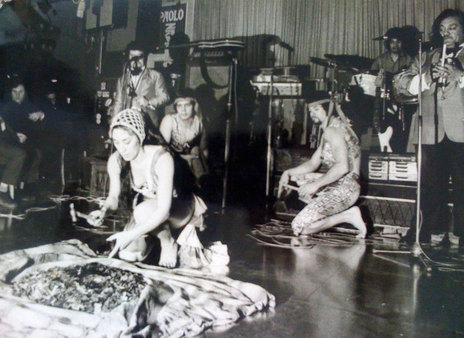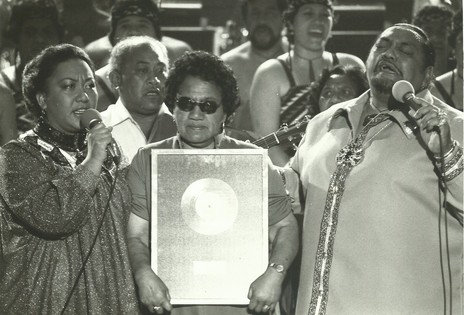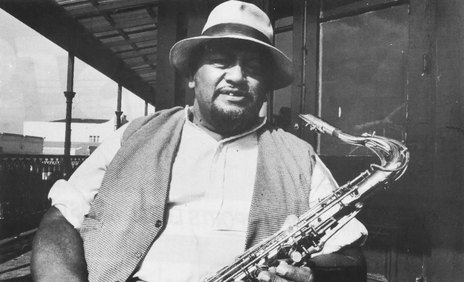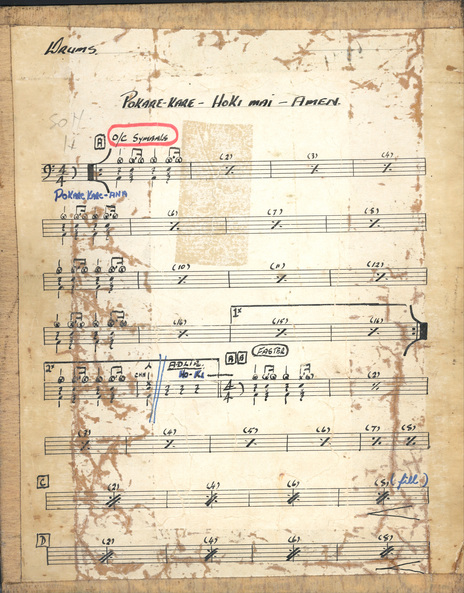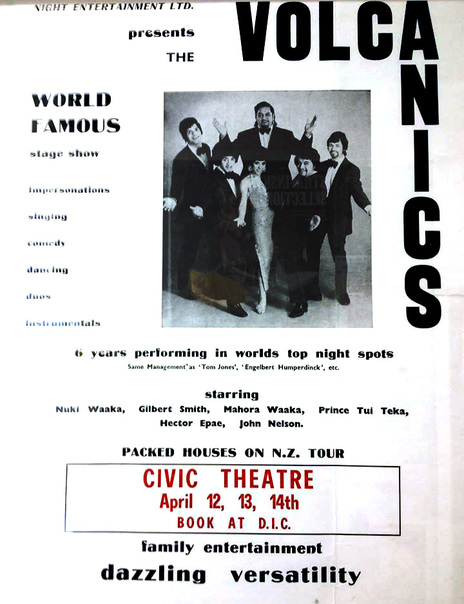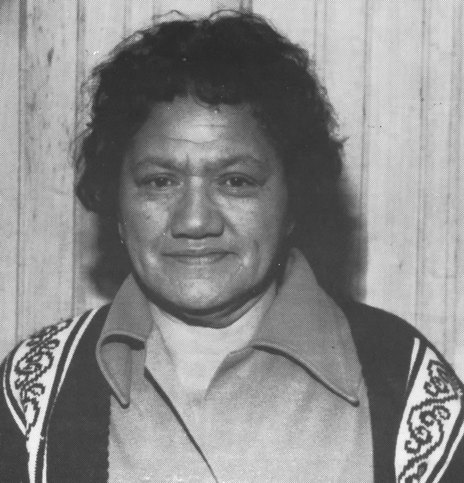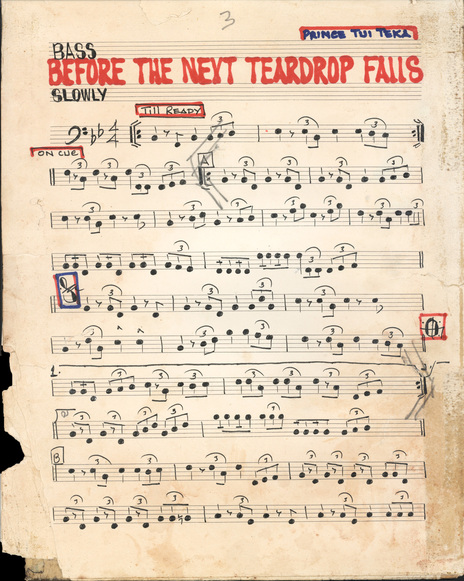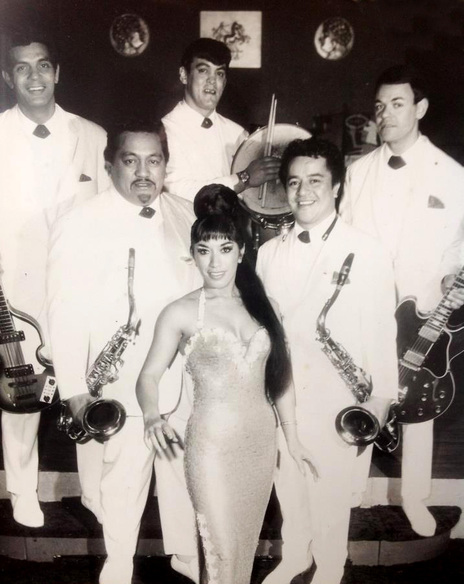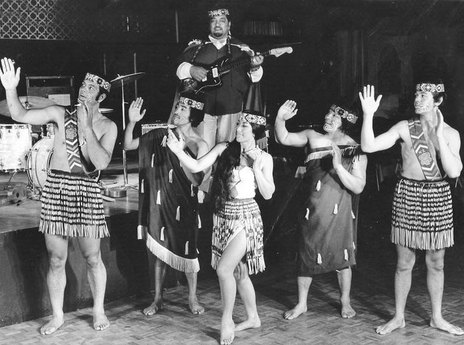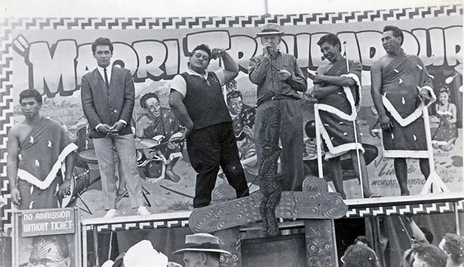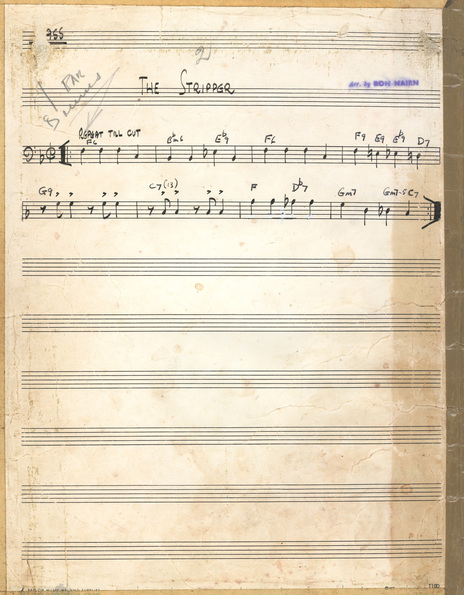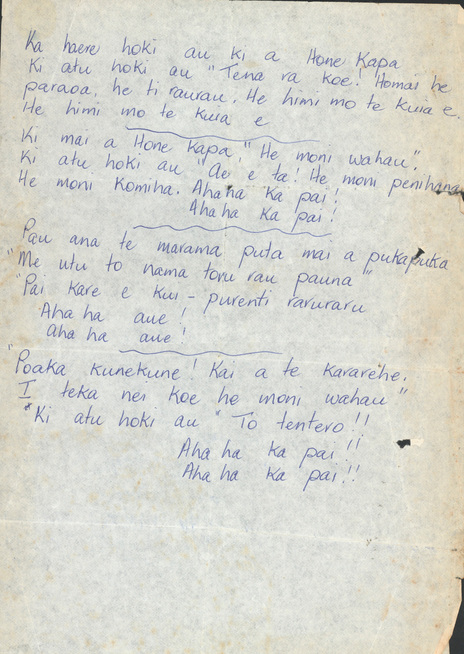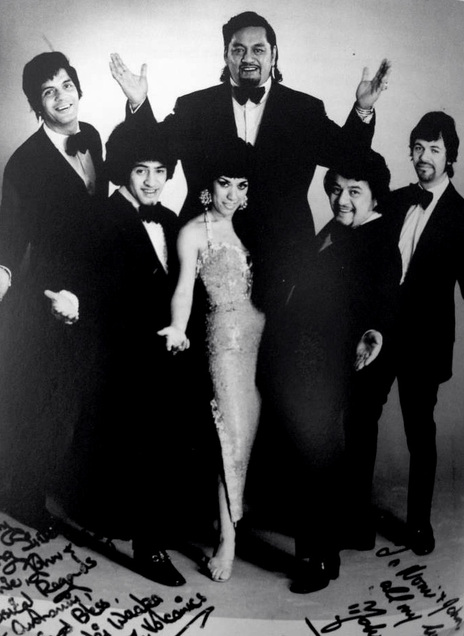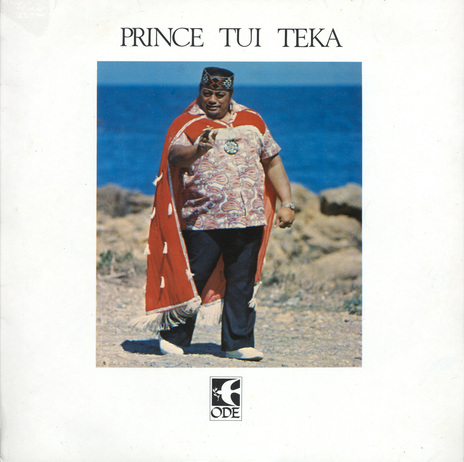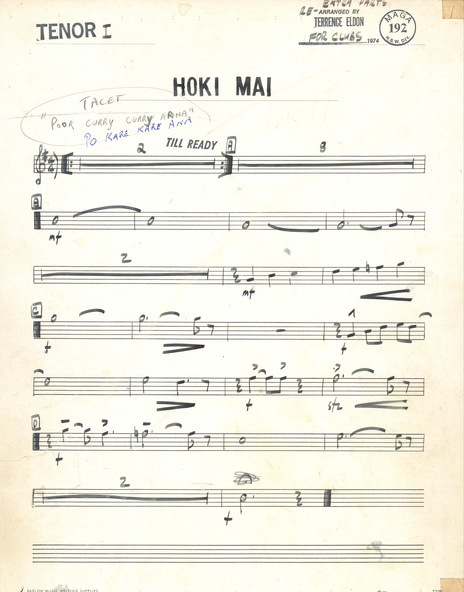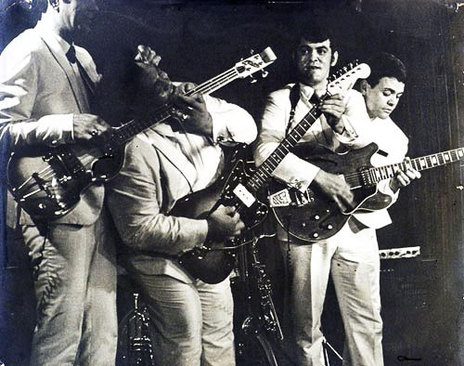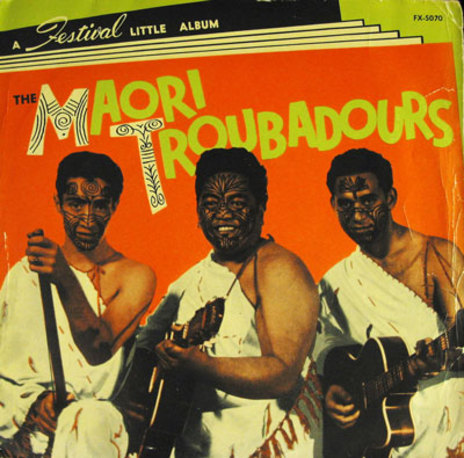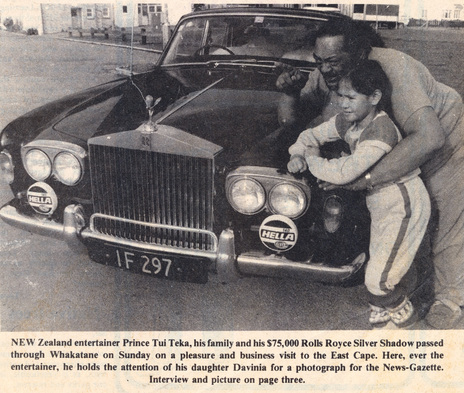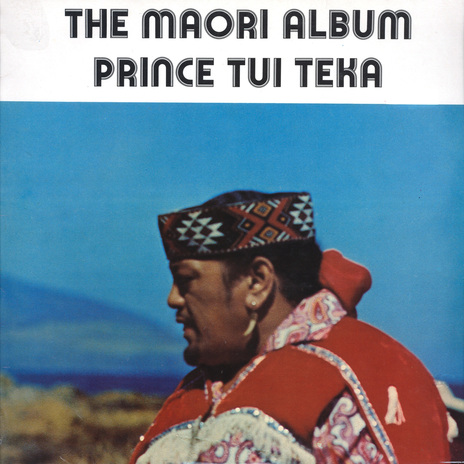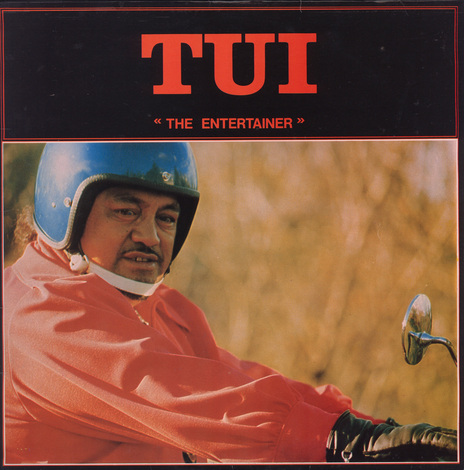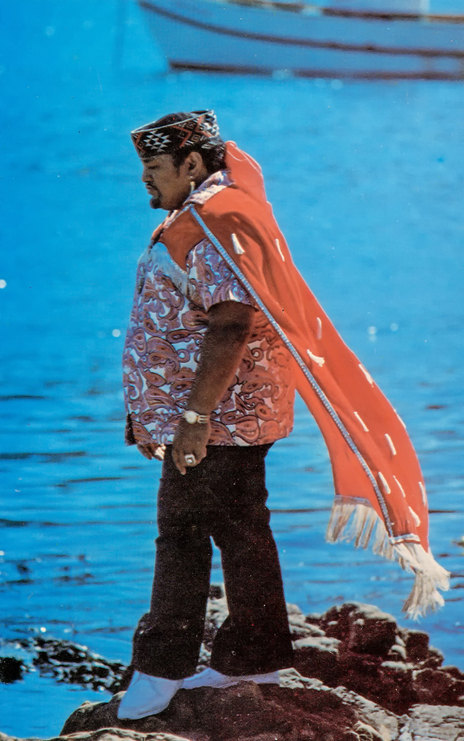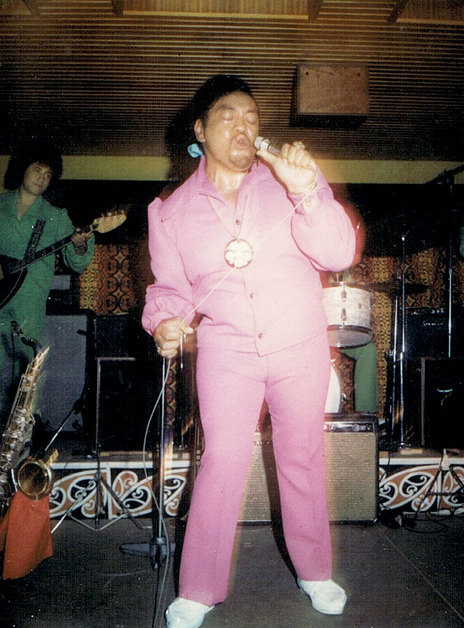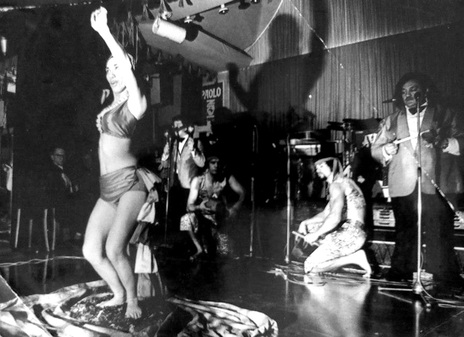Tumanako Teka was born on March 8, 1937 in Ruatāhuna, a remote settlement in Te Urewera mountains in Tūhoe heartland. Both parents were musicians and Tui became proficient on guitar and saxophone before school age, later proving himself capable on a dozen instruments.
School never appealed to the wayward boy, a regular truant whose main interests were mischief and music and who was playing at woolshed parties before his teens. In 1952, aged 15 and without advising his whānau, he shipped out to Sydney to join a travelling circus.
Teka spent six years as a circus hand, starting with cleaning the elephants’ quarters. “I learned a lot from the elephants,” he said later. “They showed me how to eat! Tee hee hee ... But, yeah, they proved to me that you could be overweight and still be the star of the show.”
Tui progressed from cleaner to performer, initially cast as a "savage" but later utilising his comedic and musical skills. In 1958 he formed The Royal Samoans and Maoris, billing himself as Prince Tui Latui. They briefly renamed themselves The Royal Polynesians before settling on The Maori Troubadours.
This was the birth of the Māori showbands and the Maori Troubadours were at the forefront.
At that time, across the Tasman, Māori musicians were formulating a new entertainment concept, combining all musical genres, slick showmanship, comedy and impressions with traditional kapa haka and waiata. This was the birth of the Māori showbands and The Maori Troubadours were at the forefront.
Calling on Tui’s contacts on the circus circuit, the Troubadours performed mostly at fairs and showgrounds, competing with similarly-housed entertainment. They paid a concession fee to erect their own marquee, selling tickets and performing anything up to a dozen shows a day, travelling from fair to fair in a convoy of vehicles, Tui always in the flashest of the fleet, a big American car to reflect his status. It wasn’t an exotic lifestyle, the troupe mostly accommodated in camping grounds or even sleeping in the group vehicles.
Despite these low-key performances, The Maori Troubadours quickly made a name for themselves and in 1960 they undertook two unlikely tours, with the Mickey Mouse Club and the Harlem Globetrotters. That same year, during a residency at Sydney’s Rex Hotel, The Maori Troubadours released three records, a full-length album (A Little This … A Little That), a self-titled EP of traditional Māori songs and a second EP Shakin’ In The Shaky Isle, with the title track a credible rock and roll song. None were big sellers and The Maori Troubadours were soon back on the showground circuit.
In 1966, tiring of the low rent lifestyle, Teka disbanded the Troubadours and joined The Māori Volcanics, formed by Nuki Waaka the previous year. Within weeks of Tui’s arrival, the Volcanics sailed to Japan and over the next six years Prince Tui Teka (as he had now renamed himself) performed extensively around the Pacific, the Far East, Europe, Britain and North America.
During his time with the Volcanics, Teka adopted his flamboyant stage costumes. Out went the Polynesian royalty look and in came the rhinestone jackets, embroidered shirts, extravagant capes and bejewelled headwear.
Tui Teka remained with The Māori Volcanics until they disbanded following a 1972 New Zealand tour (they would later reform, minus Teka). Returning to Sydney, he fronted his own group and spent the decade continuously touring Australia and Pacific with regular visits back to New Zealand. On one such occasion he met Missy Kururangi, whom he married in 1976, and who was to join Teka’s group.
Signed to New Zealand’s Ode Records, Prince Tui Teka recorded three albums and half a dozen singles in the 1970s. None were chart-busters, but on NZ’s provincial circuit Prince Tui Teka became an institution. One of the singles was ‘Il Silenzio’, written and recorded by Italian trumpeter Nini Rossi in 1965. It had been a staple part of Teka’s routine with the Volcanics and it remained in Teka’s repertoire. In 1981 Deane Waretini added Māori lyrics and recorded it as ‘The Bridge’.
Another international song which impressed Teka was ‘Mimpi Sedih’ by Emilia Contessa, a hit record in Contessa’s homeland Indonesia, where Tui toured twice in the 1970s.
During a 1979 visit to Missy’s hometown of Tokomaru Bay, Teka approached Missy’s aunt, the great Māori educator and songwriter Ngoi Pēwhairangi, about rearranging ‘Mimpi Sedih’ and writing Māori lyrics as a love song to Missy. The result was ‘E Ipo’.
‘E Ipo’ (produced by Dalvanius Prime) shot to the top of the NZ charts and two albums – The Man, The Music, The Legend and Live In New Zealand – went Top 10.
In 1981, after almost 30 years living overseas, Prince Tui Teka returned home, settling in Tokomaru Bay. Everything seemed to fall into place upon his return – he was signed to RCA Records, ‘E Ipo’ (produced by Dalvanius Prime) shot to the top of the New Zealand charts and two albums – The Man, The Music, The Legend and Live In New Zealand – went Top 10. In 1982 he even had his own weekly television series.
Prince Tui Teka was much in demand, appearing in three movies (Came A Hot Friday, The Silent One and Savage Islands) and a German-made television series, Jack Holborn, and performing to full houses – clubs, pubs and theatres.
Prince Tui Teka was born in a small settlement and, after his globetrotting had finished, it was in a small settlement that he lived. Throughout his career he had an affinity with isolated settlements and on both sides of the Tasman he played in places that most performers avoid. In the 1980s, now a superstar, he continued taking his show to the most unlikely places – Eketāhuna, Manaia, Taihape …
On January 23, 1985 the Prince Tui Teka Show was performing in Ruawai, Northland (population less than 500). Following a break at that evening’s performance at the Ruawai Tavern, Prince Tui Teka failed to come back on stage when announced. Upon investigation, he was found in the makeshift dressing room, having suffered a fatal heart attack. He was 47. Less than a week later Teka’s friend and inspiration Ngoingoi Pēwhairangi died after a long illness. They were both buried in the urupā at Tokomaru Bay’s Waiparapara Marae.
Prince Tui Teka’s repertoires were mostly predictable and his stage routines were corny. But he had influence, most notably on Billy T James, who was also a member of The Māori Volcanics. It’s difficult to imagine who would even attempt such lines as “Well she wasn’t pretty but she wasn’t ugly, she was ... pretty ugly” or “I’m on a seafood diet – every time I see food I eat it.”
But the very corniness of Tui Teka’s humour was part of the attraction. A big man with a big heart and a big diet – “I see you fellas have a KFC here in Whanganui. I had lunch there today; I pulled the bus in and ordered three buckets of chicken, six large fries, four potato-and-gravy and two milk shakes. But that’s all I got because the rest of the band weren’t hungry.”
Sadly, Tui’s muse and widow Missy Teka died in a motor accident on February 29, 2008. Tui and Missy Teka are buried side by side in Tokomaru Bay.
